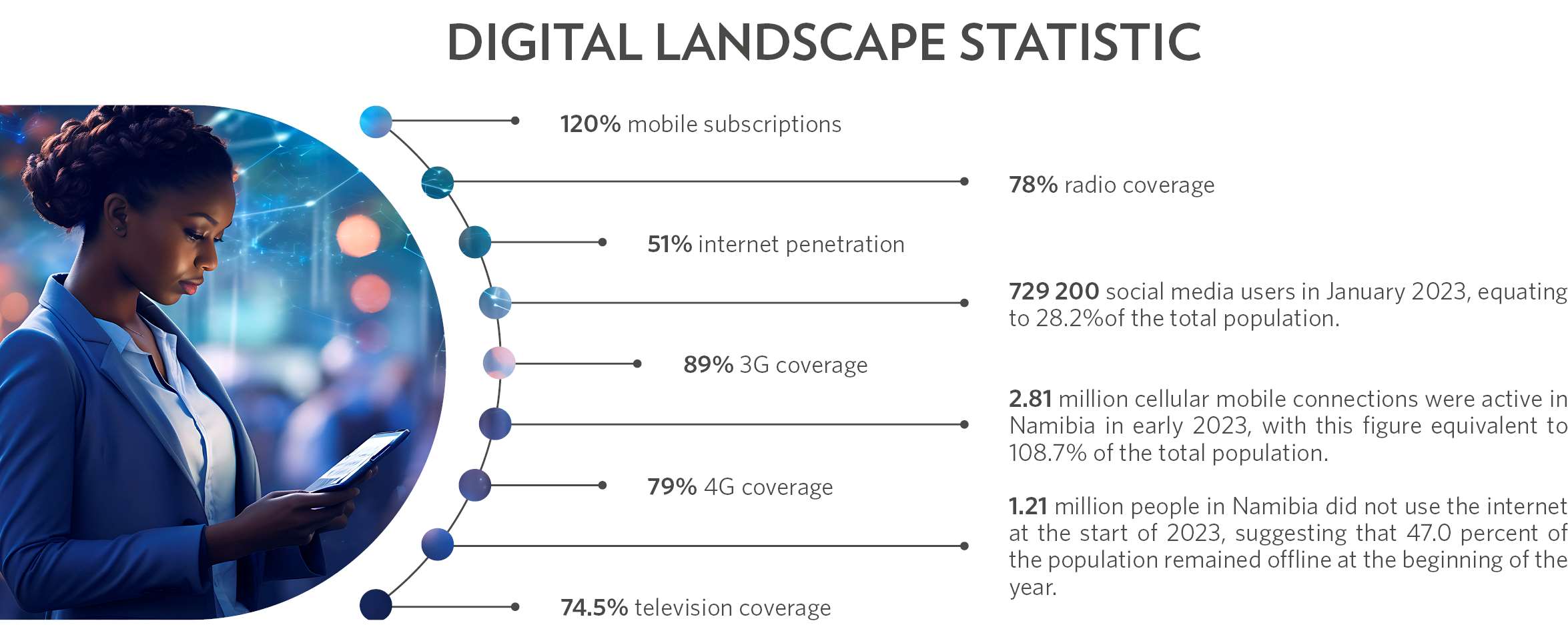Embracing Namibia’s digital wave
Overcoming challenges on the path to full connectivity
Inventive strategies and initiatives are required to narrow the digital divide.
As Namibia charts the digital landscape, its course is marked by achievements, hurdles and a collective pursuit of a digitally inclusive future."Increased connectivity signifies the expansion of broadband internet access and mobile connectivity," said the ministry of information, communication and technology’s spokesperson, Shoki Kandjimi.
With 120% mobile subscriptions, 51% internet penetration, 89% 3G coverage, 79% 4G coverage, 74.5% television coverage and 78% radio coverage, the pursuit of a digitally inclusive future is within the country’s reach. Yet, within this progress, bridging the digital divide between rural and urban areas remains a pertinent obstacle.
“Namibia's unique geographical and societal obstacles necessitate the implementation of inventive strategies and additional exertions. In order to prioritise the access of rural communities to digital services, it is necessary to establish a universal fund and create ICT rural centres, as well as other state-subsidised ICT services. These initiatives will contribute to the goal of narrowing the digital divide,” Kandjimi explained.
Transformation strategy
With the ministry currently at an advanced stage of finalising the National Digital Strategy, which will serve as a reform to harness the digital transformation trajectory to maximise the adoption and use of ICT across all sectors, Namibia is set to see digitalisation extend across the nation in the next five years – despite currently falling below the global and regional average in digital infrastructure.
On the matter of digital infrastructure, Kandjimi revealed that government, through the information and communication ministry, provides funding to the regulator for the implementation of the 5G strategy.
“The rolling out of the 5G infrastructure and technologies will offer improved connectivity, faster download speeds, low latency, connectivity for many devices at a time and network capabilities across the country. The Communications Act provides for infrastructure sharing for operators to co-locate on each other’s infrastructure, thus avoiding unnecessary duplication of infrastructure. Additionally, the Communications Act provides for the establishment of the Universal Access Fund to roll out infrastructure in unserved and underserved areas,” he added.
In addition to the challenge posed by the country’s inadequate digital infrastructure, security and safety concerns have also topped the list of hurdles, with cases of data intrusions, unauthorised access and cyber threats increasing of late.



